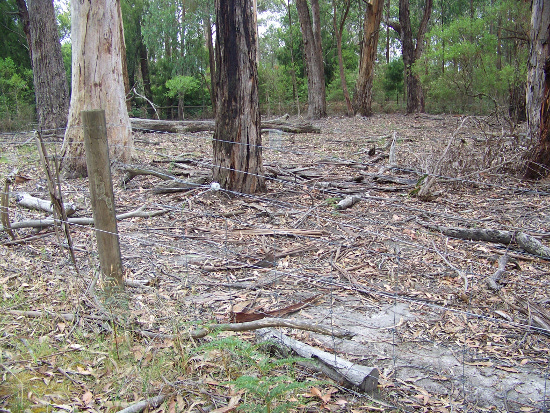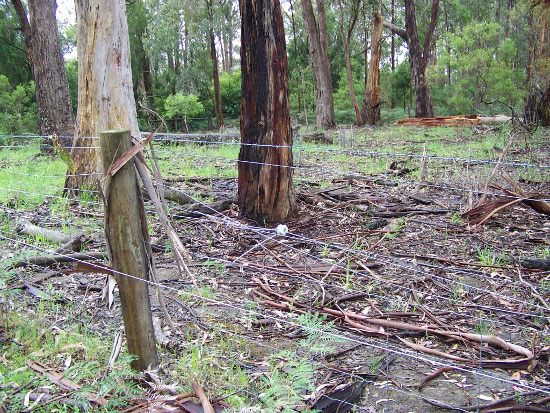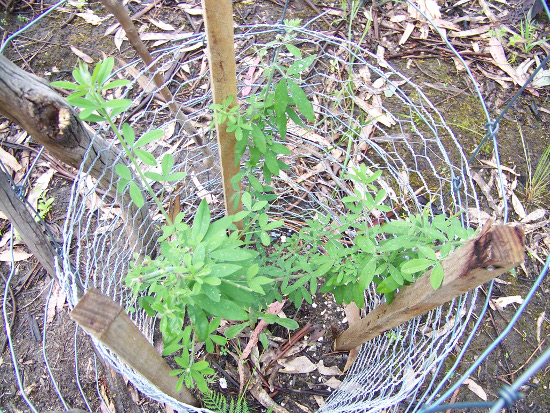In one of our bush paddocks, we tried keeping pigs to clear the undergrowth and dig up the ground to improve the acidic clay hard pan soil. The pigs did a good job digging up our bracken but once they'd been slaughtered, the field took a long time to recover.
We tried spreading seeds such as chicory and plantain with moderate success. Here is how the field looked in January 2016:

By November 2016 it had greened up a little bit:

Because the field was slow to recover by itself, we decided to try tagasaste (also known as "tree lucerne") farming. The tagasaste tree can be cut right back and the branches used as animal fodder or as mulch, in the same way as lucerne hay.
We planted one tagasaste in December 2015 and didn't water it at all beyond the initial week after transplanting, despite scorching temperatures. That tagasaste stayed very healthy - the worst that happened to it was that it was trimmed to the edge of its protective wire by wallaby/ies. You can see where the top leaves of the plant are smaller because they've grown back after being bitten off.

Because the first tagasaste was a success, we planted about 15 more in our pig field, and most are doing well. All were grown from seed. If we can keep the wallabies at bay, we hope to eventually run a goat in the paddock.
We tried spreading seeds such as chicory and plantain with moderate success. Here is how the field looked in January 2016:

By November 2016 it had greened up a little bit:

Because the field was slow to recover by itself, we decided to try tagasaste (also known as "tree lucerne") farming. The tagasaste tree can be cut right back and the branches used as animal fodder or as mulch, in the same way as lucerne hay.
We planted one tagasaste in December 2015 and didn't water it at all beyond the initial week after transplanting, despite scorching temperatures. That tagasaste stayed very healthy - the worst that happened to it was that it was trimmed to the edge of its protective wire by wallaby/ies. You can see where the top leaves of the plant are smaller because they've grown back after being bitten off.

Because the first tagasaste was a success, we planted about 15 more in our pig field, and most are doing well. All were grown from seed. If we can keep the wallabies at bay, we hope to eventually run a goat in the paddock.
